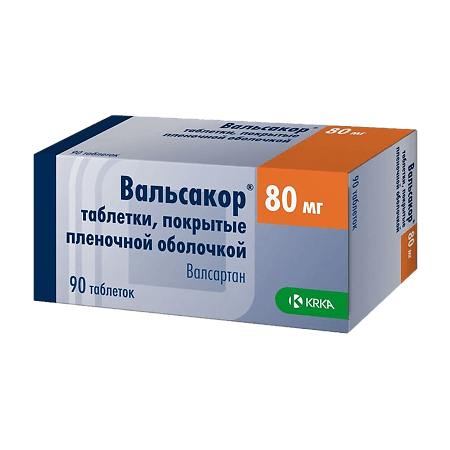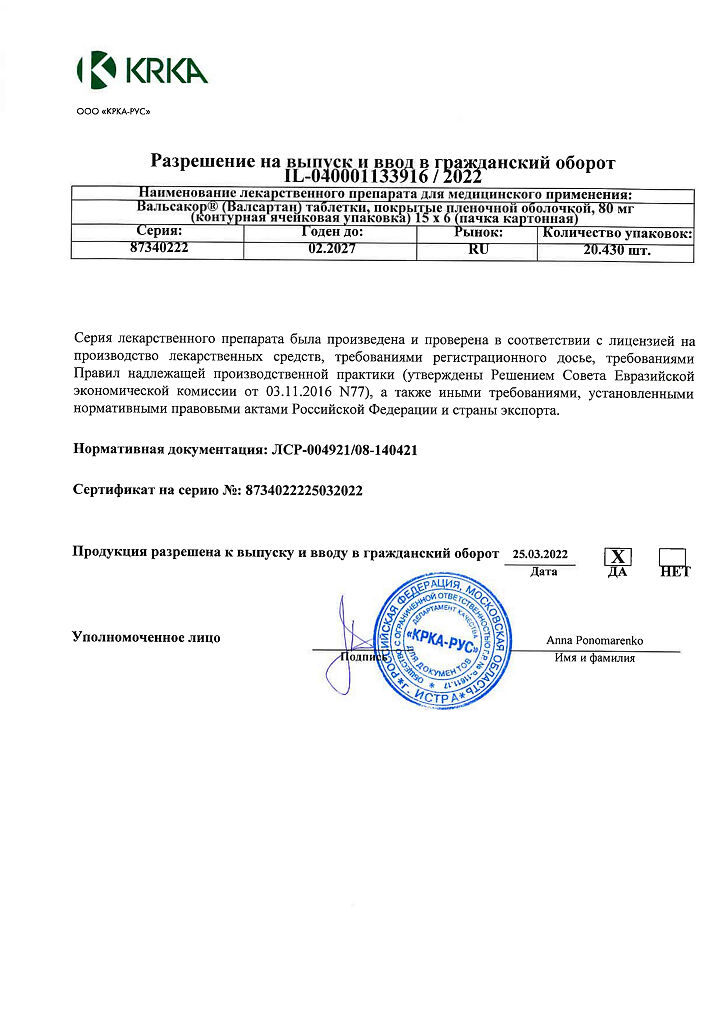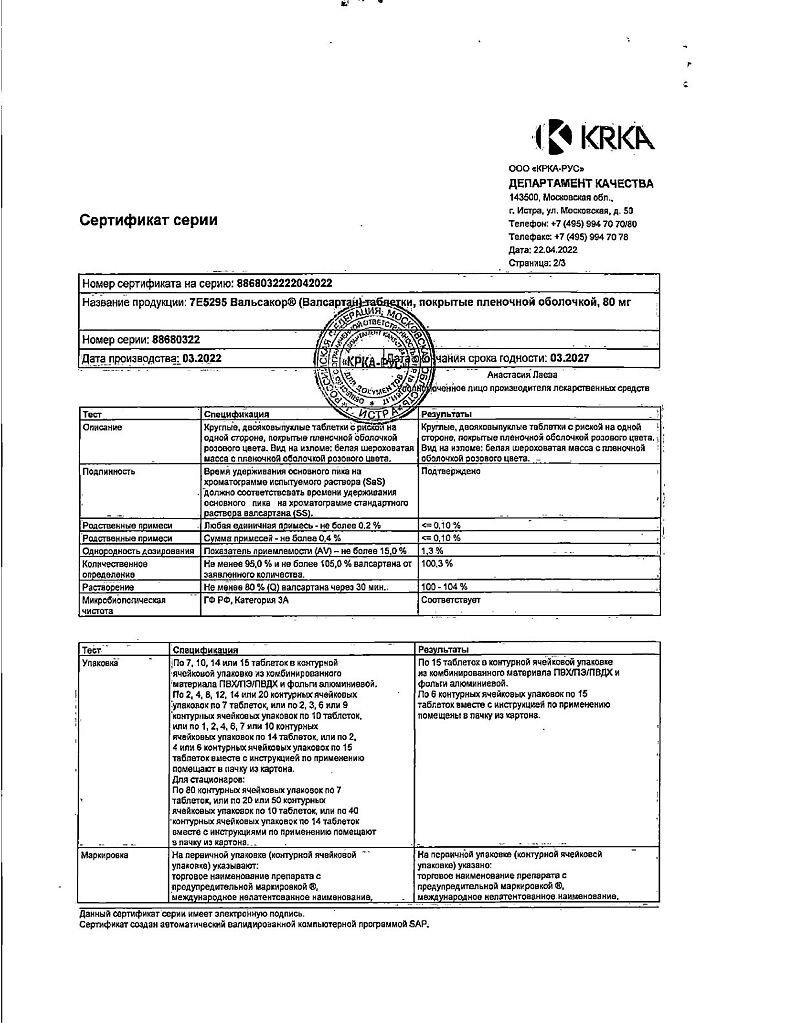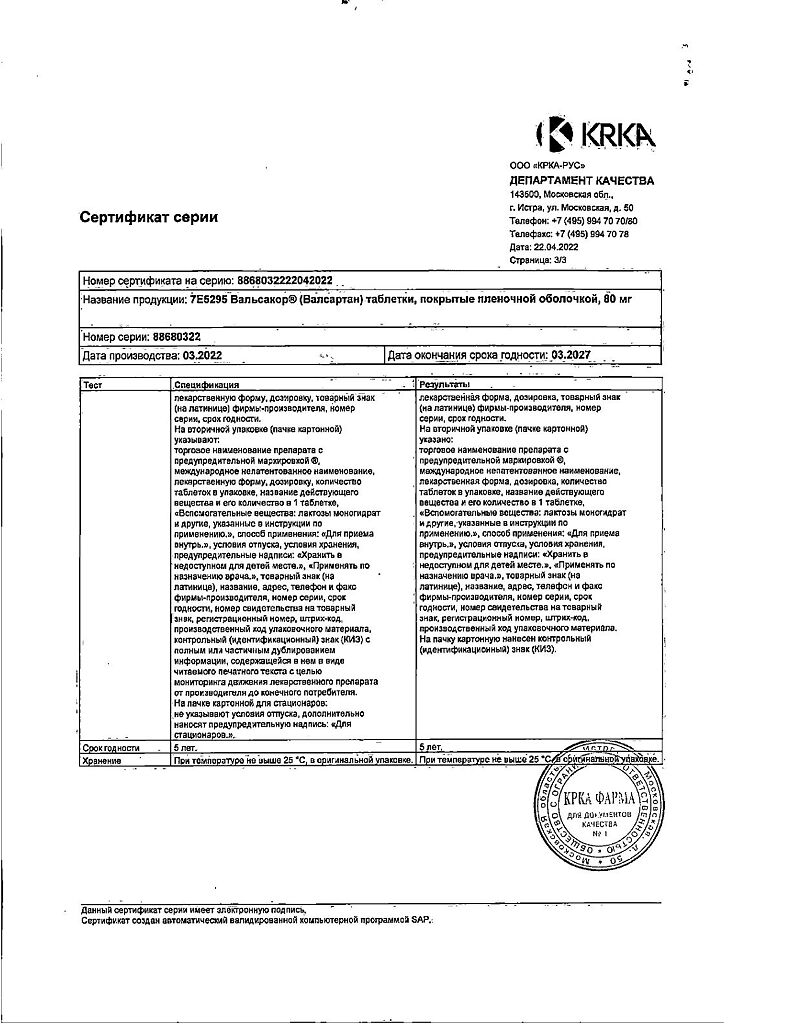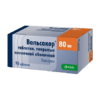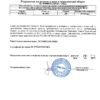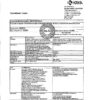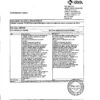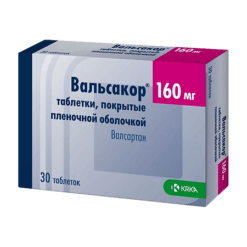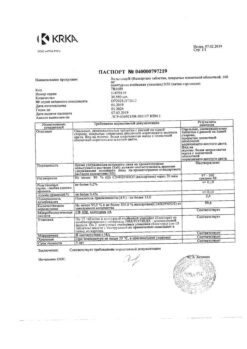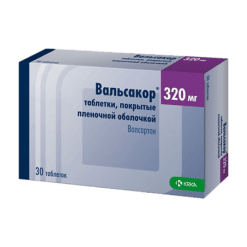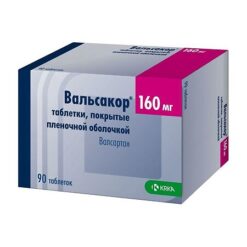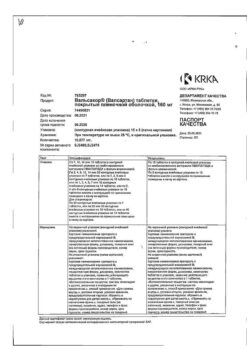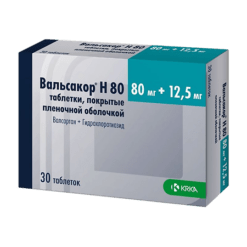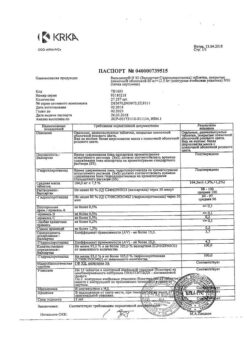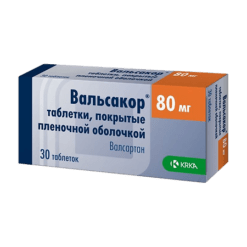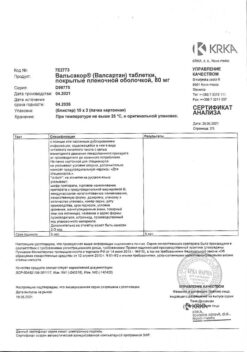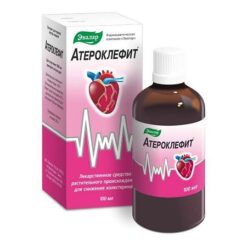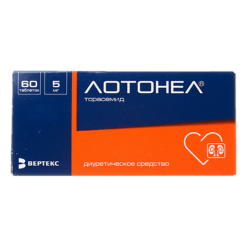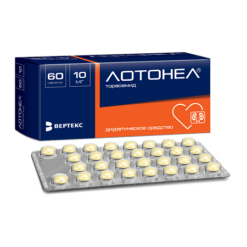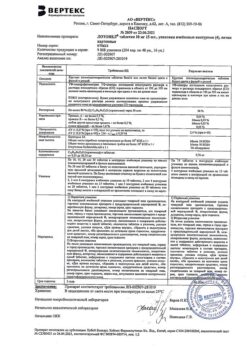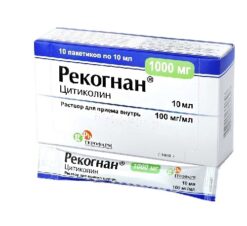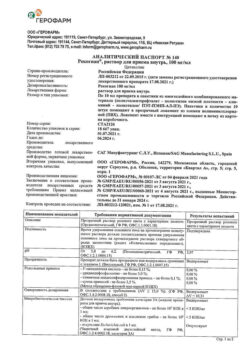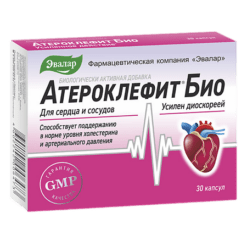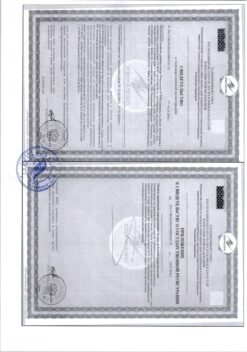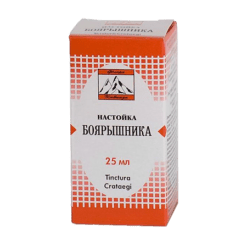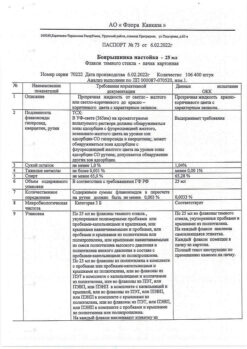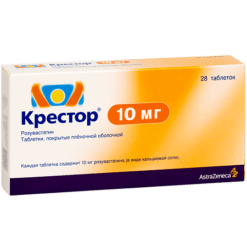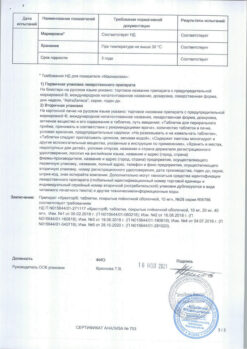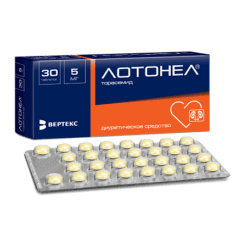No products in the cart.
Valsacor, 80 mg 90 pcs.
€22.24 €20.53
Description
Myocardial infarction, Hypertension (high blood pressure), Heart failure
Patients over 18 years
- Arterial hypertension.
- Chronic heart failure (II-IV functional class according to NYHA classification) in complex therapy (against standard therapy) in patients who do not receive ACE inhibitors.
- increase survival of patients after acute MI complicated by left ventricular insufficiency and/or left ventricular systolic dysfunction with stable hemodynamic parameters.
Patients from 6 to 18 years
- Arterial hypertension in 6- to 18-year-olds.
.
Indications
Indications
Patients over 18 years of age
Arterial hypertension.
Chronic heart failure (II-IV functional class according to the NYHA classification) as part of complex therapy (against the background of standard therapy) in patients not receiving ACE inhibitors.
Increasing the survival rate of patients after acute MI complicated by left ventricular failure and/or left ventricular systolic dysfunction in the presence of stable hemodynamic parameters.
Patients from 6 to 18 years old
Arterial hypertension in children and adolescents from 6 to 18 years.
Pharmacological effect
Pharmacological effect
angiotensin II receptor antagonist
Special instructions
Special instructions
Hyperkalemia, simultaneous use of potassium-sparing diuretics, potassium supplements, potassium-containing nutritional supplements or other drugs that can increase the content of potassium in the blood plasma (for example, heparin), mild to moderate impaired liver function of non-biliary origin without cholestasis, severe impaired renal function (creatinine clearance less than 10 ml/min) (no clinical data), impaired renal function in patients from 6 to 18 years (CC less than 30 ml/min), including those on hemodialysis, hyponatremia, following a diet with limited salt intake, conditions accompanied by a decrease in circulating blood volume (BCV) (including diarrhea, vomiting), bilateral renal artery stenosis or stenosis of the artery of a single kidney, condition after kidney transplantation, primary hyperaldosteronism, in patients with CHF III-IV functional class according to NYHA, function kidneys which depend on the state of the renin-angiotensin-aldosterone system (RAAS), stenosis of the aortic and/or mitral valve, hypertrophic obstructive cardiomyopathy (HOCM), in patients with hereditary angioedema, or angioedema during previous therapy with ARA II or ACE inhibitors.
It is not recommended to use ARB II, including valsartan, concomitantly with ACE inhibitors, since their simultaneous use does not have advantages over valsartan or ACE inhibitor monotherapy in terms of overall mortality.
Contraindicated for children under 6 years of age – for arterial hypertension, for children under 18 years of age – for other indications.
Patients from 6 to 18 years old
Arterial hypertension
The recommended initial dose of Valsacor® in children and adolescents from 6 to 18 years of age is 40 mg for children weighing less than 35 kg and 80 mg for children weighing more than 35 kg. Dose adjustment is recommended taking into account the reduction in blood pressure. The maximum recommended daily doses are shown in the table below. The use of higher doses is not recommended.
Body weight
Maximum recommended daily dose
≥ 8 kg < 35 kg
80 mg
≥ 35 kg < 80 kg
160 mg
≥ 80 kg ≤ 160 kg
320 mg
Chronic heart failure and previous myocardial infarction
The drug Valsacor® is not recommended for the treatment of CHF and post-acute myocardial infarction in patients under 18 years of age.
Elderly patients
No dose adjustment is required in patients over 65 years of age.
Renal dysfunction
No dose adjustment is required in patients with CC more than 10 ml/min. The simultaneous use of Valsacor® with aliskiren in patients with moderate and severe renal impairment (creatinine clearance less than 60 ml/min) is contraindicated.
Liver dysfunction
In patients with mild or moderate liver dysfunction of non-biliary origin without cholestasis, the drug should be used with caution, the daily dose should not exceed 80 mg.
Patients with diabetes mellitus
The simultaneous use of Valsacor® with aliskiren in patients with diabetes is contraindicated.
Hyperkalemia
Caution should be exercised when using potassium-sparing diuretics (spironolactone, eplerenone, triamterene, amiloride), potassium supplements, potassium-containing salt substitutes or other drugs that can increase plasma potassium levels (for example, heparin). It is necessary to regularly monitor the potassium content in the blood plasma.
Renal dysfunction
In patients with impaired renal function, no dose changes are required. Since there is no data on the use of the drug in severe renal failure (creatinine clearance less than 10 ml/min or 0.167 ml/s) and in patients on hemodialysis, in such cases the drug is recommended to be used with caution.
The simultaneous use of valsartan with aliskiren in patients with moderate and severe renal impairment (creatinine clearance less than 60 ml/min) is contraindicated.
Liver dysfunction
In patients with mild to moderate liver dysfunction without cholestasis, Valsacor® should be used with caution.
Patients with hyponatremia and/or dehydration
In patients with severe hyponatremia and/or dehydration, for example due to taking large doses of diuretics, in rare cases, arterial hypotension with clinical manifestations may develop at the beginning of therapy with Valsacor®. Before starting treatment, it is recommended to restore sodium and/or bcc levels, in particular by reducing the doses of diuretics.
Renal artery stenosis
The use of valsartan in a short course in patients with renovascular hypertension, which developed secondary to stenosis of the artery of a single kidney, does not cause significant changes in renal hemodynamics, creatinine concentration or urea nitrogen in the blood serum. However, given that other drugs that affect the RAAS may cause increases in serum urea and creatinine concentrations in patients with bilateral renal artery stenosis or solitary renal artery stenosis, serum creatinine and residual urea nitrogen concentrations should be regularly monitored.
Condition after kidney transplantation
The safety of using Valsacor® in patients who have recently undergone kidney transplantation has not been established.
Primary hyperaldosteronism
Patients with primary hyperaldosteronism are resistant to antihypertensive drugs that affect the RAAS, therefore the use of Valsacor® is not recommended for such patients.
Stenosis of the aortic and/or mitral valves, HOCM
The drug Valsacor® should be used with caution in patients with hemodynamically significant stenosis of the aortic and/or mitral valves or with HOCM.
The period after myocardial infarction
Concomitant use with ACE inhibitors is not recommended, as it does not have additional clinical advantages over monotherapy and increases the risk of adverse events.
The use of valsartan in patients after a myocardial infarction often leads to a slight decrease in blood pressure, but discontinuation of therapy due to arterial hypotension is usually not required if drug dosage recommendations are followed.
Treatment with Valsacor® should be initiated cautiously. Assessment of patients’ condition after acute MI should include monitoring of renal function.
Possible simultaneous use in acute MI with other drugs: thrombolytics, acetylsalicylic acid, beta-blockers and HMG-CoA reductase inhibitors (statins).
Chronic heart failure
In patients with CHF, the simultaneous use of three classes of drugs is not recommended: ACE inhibitors, beta-blockers and valsartan, since this therapy did not provide additional clinical effect, and the risk of adverse events increased. Use in patients with CHF is usually accompanied by a decrease in blood pressure, however, if recommendations for dose selection are followed, treatment rarely requires discontinuation due to arterial hypotension. Treatment with Valsacor® in patients with CHF should be initiated with caution. Due to the suppression of RAAS activity in some patients (for example, in patients with CHF III-IV functional class according to the NYHA classification, whose kidney function depends on the state of the RAAS), during therapy with ACE inhibitors, changes in renal function are possible: the development of oliguria and/or progressive azotemia, and in rare cases, acute renal failure and/or death. The drug Valsacor® blocks angiotensin II receptors, so patients with CHF require regular monitoring of renal function.
History of angioedema
Among patients with angioedema during therapy with Valsacor®, there were cases of a history of angioedema development, including in response to ACE inhibitors. If angioedema develops, the drug should be discontinued immediately and the possibility of repeated use should be excluded.
Special information on excipients
The drug Valsacor® contains lactose, so it should not be used for the following conditions: lactose intolerance, lactase deficiency, glucose-galactose malabsorption syndrome.
Due to the possibility of dizziness or weakness while using the drug Valsacor®, care must be taken when driving vehicles and engaging in potentially hazardous activities.
Active ingredient
Active ingredient
Valsartan
Composition
Composition
(per 1 film-coated tablet, 40 mg):
Core:
Active ingredient:
Valsartan 40.00 mg
Excipients: lactose monohydrate, microcrystalline cellulose, povidone-K25, croscarmellose sodium, colloidal silicon dioxide, magnesium stearate
Film shell: hypromellose 6cp, titanium dioxide (E171), yellow iron oxide dye (E172), macrogol-4000
(per 1 film-coated tablet, 80 mg):
Core:
Active ingredient:
Valsartan 80.00 mg
Excipients: lactose monohydrate, microcrystalline cellulose, povidone-K25, croscarmellose sodium, colloidal silicon dioxide, magnesium stearate
Film shell: hypromellose 6cp, titanium dioxide (E171), red iron oxide dye (E172), macrogol-4000
(per 1 film-coated tablet, 160 mg):
Core:
Active ingredient:
Valsartan 160.00 mg
Excipients: lactose monohydrate, microcrystalline cellulose, povidone-K25, croscarmellose sodium, colloidal silicon dioxide, magnesium stearate
Film shell: hypromellose 6cp, titanium dioxide (E171), yellow iron oxide dye (E172), red iron oxide dye (E172), macrogol-4000
Pregnancy
Pregnancy
The use of ARA II in the first trimester of pregnancy is not recommended. The use of ARA II is contraindicated in the II-III trimesters of pregnancy, since use in the II-III trimesters of pregnancy can cause fetotoxic effects (decreased renal function, oligohydramnios, delayed ossification of fetal skull bones) and neonatal toxic effects (renal failure, arterial hypotension, hyperkalemia). If, nevertheless, the drug was used in the II-III trimesters of pregnancy, then it is necessary to conduct an ultrasound examination of the kidneys and bones of the fetal skull.
When planning pregnancy, it is recommended that the patient be transferred to alternative antihypertensive therapy, taking into account the safety profile. If pregnancy is confirmed, Valsacor® should be discontinued as soon as possible.
Newborns whose mothers received ARA II during pregnancy require medical supervision, as there is a risk of developing arterial hypotension. There is no data on the excretion of valsartan into breast milk. Therefore, the issue of stopping breastfeeding or canceling valsartan therapy and switching to alternative antihypertensive therapy should be decided, taking into account the safety profile.
Contraindications
Contraindications
Hypersensitivity to valsartan or other components of the drug.
Severe liver dysfunction (more than 9 points on the Child-Pugh scale), biliary cirrhosis and cholestasis.
Concomitant use with aliskiren and drugs containing aliskiren in patients with diabetes mellitus and/or moderate or severe renal impairment (glomerular filtration rate (GFR) less than 60 ml/min/1.73 m2 body surface area).
Concomitant use with ACE inhibitors in patients with diabetic nephropathy.
Pregnancy and breastfeeding period.
Age up to 6 years – according to arterial hypertension, up to 18 years – according to other indications.
Lactase deficiency, lactose intolerance, glucose-galactose malabsorption syndrome, since Valsacor® contains lactose.
Side Effects
Side Effects
World Health Organization (WHO) side effect frequency classification:
very common ≥ 1/10
often ≥ 1/100 to < 1/10
uncommon ≥ 1/1000 to < 1/100
rarely from ≥ 1/10000 to < 1/1000
very rare <1/10000
frequency unknown cannot be estimated from available data.
The safety profile of valsartan in patients with hypertension aged 6 to 18 years does not differ from the safety profile of valsartan in patients with hypertension over 18 years of age.
Arterial hypertension
Blood and lymphatic system disorders:
frequency unknown: decreased hemoglobin, decreased hematocrit, neutropenia, thrombocytopenia.
Immune system disorders:
frequency unknown: hypersensitivity reactions, including serum sickness.
Metabolic and nutritional disorders:
frequency unknown: increased serum potassium, hyponatremia;
Hearing and labyrinth disorders:
uncommon: vertigo.
Vascular disorders:
frequency unknown: vasculitis.
Disorders of the respiratory system, chest and mediastinal organs:
uncommon: cough.
Gastrointestinal disorders:
uncommon: abdominal pain.
Disorders of the liver and biliary tract:
frequency unknown: impaired liver function, including increased concentrations of bilirubin in the blood plasma.
Disorders of the skin and subcutaneous tissues:
frequency unknown: angioedema, skin rash, pruritus, bullous dermatitis.
Musculoskeletal and connective tissue disorders:
frequency unknown: myalgia.
Renal and urinary tract disorders:
frequency unknown: renal dysfunction and renal failure, increased serum creatinine concentrations.
General disorders and disorders at the injection site:
uncommon: increased fatigue.
During clinical studies in patients with hypertension, the following adverse events were observed, the cause-and-effect relationship of which with the use of valsartan was not established: arthralgia, asthenia, back pain, diarrhea, dizziness, insomnia, decreased libido, nausea, peripheral edema, pharyngitis, rhinitis, sinusitis, upper respiratory tract infections.
After acute myocardial infarction and/or chronic heart failure (II-IV functional class according to the NYHA classification)
Blood and lymphatic system disorders:
frequency unknown: thrombocytopenia.
Immune system disorders:
frequency unknown: hypersensitivity reactions, including serum sickness.
Metabolic and nutritional disorders:
uncommon: hyperkalemia;
frequency unknown: increased serum potassium, hyponatremia.
Nervous system disorders:
often: dizziness, postural dizziness;
uncommon: fainting, headache.
Hearing and labyrinth disorders:
uncommon: vertigo.
Cardiac disorders:
uncommon: increased symptoms of CHF.
Vascular disorders:
often: marked decrease in blood pressure, orthostatic hypotension;
frequency unknown: vasculitis.
Disorders of the respiratory system, chest and mediastinal organs:
uncommon: cough.
Gastrointestinal disorders:
uncommon: nausea, diarrhea.
Disorders of the liver and biliary tract:
frequency unknown: liver dysfunction.
Disorders of the skin and subcutaneous tissues:
uncommon: angioedema;
frequency unknown: skin rash, pruritus, bullous dermatitis.
Musculoskeletal and connective tissue disorders:
rarely: rhabdomyolysis;
frequency unknown: myalgia.
Renal and urinary tract disorders:
often: renal dysfunction and renal failure;
uncommon: acute renal failure (ARF), increased serum creatinine concentration;
frequency unknown: increased concentration of urea nitrogen in the blood plasma.
General disorders and disorders at the injection site:
uncommon: asthenia, increased fatigue.
Interaction
Interaction
Dual blockade of the renin-angiotensin-aldosterone system
In some patients, double blockade of the RAAS was accompanied by the development of arterial hypotension, syncope, hyperkalemia and renal dysfunction (including acute renal failure).
The simultaneous use of ARB II, including valsartan, with drugs that affect the RAAS, such as ACE inhibitors or aliskiren, is not recommended; if such therapy is necessary, blood pressure, renal function, and blood plasma electrolyte levels should be carefully monitored.
Concomitant use of valsartan with aliskiren and drugs containing aliskiren is contraindicated in patients with diabetes mellitus and/or moderate or severe renal impairment (GFR less than 60 ml/min/1.73 m2 body surface area) and is not recommended in other patients.
Concomitant use of ARB II with ACE inhibitors is contraindicated in patients with diabetic nephropathy and is not recommended in other patients.
Concomitant use is not recommended
Lithium
Simultaneous use with lithium preparations is not recommended, since a reversible increase in the concentration of lithium in the blood plasma and an increase in its toxic effect are possible. The risk of toxic effects associated with the use of lithium preparations may further increase when used simultaneously with Valsacor® and diuretics. If simultaneous use with lithium preparations is necessary, the concentration of lithium in the blood plasma should be carefully monitored.
Potassium-sparing diuretics (spironolactone, eplerenone, triamterene, amiloride), potassium supplements, potassium supplements, and other drugs and substances that can cause hyperkalemia (eg, heparin)
If simultaneous use with drugs that affect potassium levels is necessary, it is recommended to monitor the potassium content in the blood plasma.
Concomitant use with caution
Nonsteroidal anti-inflammatory drugs (NSAIDs), including selective cyclooxygenase-2 (COX-2) inhibitors, acetylsalicylic acid at a dose of more than 3 g/day and non-selective NSAIDs
When used simultaneously with valsartan, it is possible to reduce the antihypertensive effect, increase the risk of developing renal dysfunction and increase the potassium content in the blood plasma. Before starting combination therapy, it is recommended to evaluate renal function, as well as correct water and electrolyte imbalances.
Transport proteins
In vitro studies on liver cell cultures showed that valsartan is a substrate for the transporter proteins OATP1B1/OATP1B3 and MRP2. Concomitant use of valsartan with inhibitors of the OATP1B1/OATP1B3 transport protein (rifampicin, cyclosporine) or MRP2 (ritonavir) may increase the systemic exposure of valsartan (Cmax and AUC). Caution must be exercised when starting simultaneous use with the above drugs or after their discontinuation.
No drug interactions
No clinically significant interactions have been identified with the following drugs: cimetidine, warfarin, furosemide, digoxin, atenolol, indomethacin, hydrochlorothiazide, amlodipine and glibenclamide.
Patients from 6 to 18 years old
In children and adolescents, hypertension is often associated with impaired renal function. Concomitant use of valsartan with other drugs that affect the RAAS may cause an increase in plasma potassium in such patients. Caution should be exercised when using the above combination simultaneously and regular monitoring of renal function and plasma potassium levels in this group of patients.
Overdose
Overdose
Symptoms: the main expected manifestation of a valsartan overdose is a pronounced decrease in blood pressure, which can lead to impaired consciousness, collapse and/or shock.
Treatment: symptomatic, it is recommended to induce vomiting and rinse the stomach. If a pronounced decrease in blood pressure develops: it is necessary to transfer the patient to the “lying” position on his back with his legs raised up, and inject a 0.9% sodium chloride solution intravenously. Regular monitoring of the activity of the heart and respiratory system, blood volume and the amount of urine excreted is recommended. Hemodialysis is ineffective.
Clinical pharmacology
Clinical pharmacology
Pharmacodynamics
Valsartan is a selective angiotensin II receptor antagonist (type AT1) for oral administration, of a non-protein nature.
Selectively blocks AT1 receptors. The consequence of AT1 receptor blockade is an increase in the plasma concentration of angiotensin II, which can stimulate unblocked AT2 receptors, which balances the vasopressor effects associated with the stimulation of AT1 receptors. Valsartan does not have agonist activity against AT1 receptors. Its affinity for AT1 receptors is approximately 20,000 times higher than for AT2 receptors.
Valsartan does not inhibit angiotensin-converting enzyme (ACE), also known as kininase II, which converts angiotensin I to angiotensin II and destroys bradykinin. Due to the lack of influence on ACE, the effects of bradykinin and substance P are not potentiated. The incidence of dry cough is lower in patients receiving angiotensin II receptor antagonists (ARA II) compared to patients receiving an ACE inhibitor. Valsartan does not interact with or block receptors of other hormones or ion channels involved in the regulation of the functions of the cardiovascular system.
Use for arterial hypertension in patients over 18 years of age
In the treatment of arterial hypertension (AH), valsartan reduces blood pressure (BP) without affecting heart rate (HR).
After oral administration of a single dose of valsartan, the antihypertensive effect develops within 2 hours, and the maximum reduction in blood pressure is achieved after 4-6 hours. The antihypertensive effect of valsartan persists for 24 hours after its use. With continuous use of valsartan, the maximum reduction in blood pressure, regardless of the dose, is achieved after 2-4 weeks and is maintained at this level during long-term therapy. Simultaneous use with hydrochlorothiazide allows achieving a significant additional reduction in blood pressure.
Sudden withdrawal of valsartan is not accompanied by a sharp increase in blood pressure or other undesirable clinical consequences (that is, withdrawal syndrome does not develop). In patients with hypertension, type 2 diabetes mellitus (DM) and nephropathy, taking valsartan at a dose of 160-320 mg/day, there is a significant decrease in proteinuria (36-44%).
Use after acute myocardial infarction in patients over 18 years of age
When using valsartan for 2 years, starting from 12 hours to 10 days after the development of myocardial infarction (MI) (complicated by left ventricular failure and/or left ventricular systolic dysfunction), the rates of overall mortality and cardiovascular mortality are reduced and the time to the first hospitalization for exacerbation of chronic heart failure (CHF), repeated MI, and sudden cardiac arrest is extended. and stroke (non-fatal).
CHF in patients over 18 years of age
When using valsartan (at an average daily dose of 254 mg) for 2 years in patients with CHF II-IV functional class according to the NYHA classification with a left ventricular ejection fraction (LVEF) less than 40% and an internal diastolic diameter of the LV more than 2.9 cm/m2, receiving standard therapy (ACE inhibitors, diuretics, digoxin, beta-blockers), there was There was a significant reduction in the risk of hospitalization due to exacerbation of CHF, a slowdown in the progression of CHF, an improvement in the functional class of CHF according to the NYHA classification, an increase in LVEF, as well as a decrease in the severity of symptoms of heart failure and an improvement in quality of life compared to placebo.
Use in patients over 18 years of age with hypertension and impaired glucose tolerance
When using valsartan and changing lifestyle, there was a statistically significant reduction in the risk of developing diabetes in patients with hypertension and impaired glucose tolerance. Valsartan had no effect on the incidence of deaths as a result of cardiovascular events, myocardial infarction and non-fatal transient ischemic attacks, the frequency of hospitalizations due to exacerbation of CHF or unstable angina, or arterial revascularization in this category of patients differing in age, gender and race. In patients receiving valsartan, the risk of developing microalbuminuria was significantly lower than in patients not receiving this therapy.
The recommended starting dose of valsartan in patients with hypertension and impaired glucose tolerance is 80 mg once daily. If necessary, the dose can be increased to 160 mg.
Use in children and adolescents from 6 to 18 years of age with hypertension
In children and adolescents from 6 to 18 years of age, valsartan provides a dose-dependent gradual decrease in blood pressure. When using valsartan, the maximum reduction in blood pressure, regardless of the dose taken orally, is achieved within 2 weeks and is maintained at the achieved level during long-term therapy.
Pharmacokinetics
Suction
After taking valsartan orally, the maximum concentration (Cmax) in the blood plasma is achieved within 2-4 hours. The average absolute bioavailability is 23%. When valsartan is administered with food, the area under the concentration-time curve (AUC) and Cmax in plasma are reduced by 40% and 50%, respectively. However, 8 hours after taking the drug, plasma concentrations of valsartan taken on an empty stomach and with food are the same. A decrease in AUC is not accompanied by a clinically significant decrease in the therapeutic effect of valsartan, so Valsacor® can be taken regardless of meal time.
Distribution
The volume of distribution (Vd) of valsartan during the steady-state period after intravenous administration was approximately 17 L, indicating the absence of a pronounced distribution of valsartan in tissues. Valsartan actively binds to plasma proteins (94-97%), mainly to albumin.
Metabolism
Valsartan does not undergo significant biotransformation; only about 20% of the dose taken orally is excreted in the form of metabolites. The hydroxyl metabolite is detected in blood plasma in low concentrations (less than 10% of the AUC of valsartan). This metabolite has no pharmacological activity.
Removal
Valsartan is excreted in two phases: a-phase with a half-life (T1/2a) of less than 1 hour and b-phase with T1/2b – about 9 hours. Valsartan is excreted mainly unchanged through the intestines (about 83%) and kidneys (about 13%). After intravenous administration, plasma clearance of valsartan is about 2 l/hour, renal clearance is 0.62 l/hour (about 30% of the total clearance). T1/2 of valsartan is 6 hours.
Pharmacokinetics in special groups of patients
Patients with CHF
In patients with CHF, the time to reach Cmax and T1/2 are similar to those in healthy volunteers. The increase in AUC and Cmax is directly proportional to the increase in the dose of valsartan (from 40 mg to 160 mg 2 times a day). The cumulation factor averages 1.7. When taken orally, the clearance of valsartan is about 4.5 l/hour. The age of patients with CHF did not affect the clearance of valsartan.
Elderly patients (over 65 years old)
In some patients over 65 years of age, the bioavailability of valsartan was higher than in younger patients, which is not clinically significant.
Patients with impaired renal function
The renal clearance of valsartan is only 30% of the total clearance, therefore there is no correlation between renal function and systemic bioavailability of valsartan. No dose adjustment is required in patients with impaired renal function (creatinine clearance (CC) more than 10 ml/min). The safety of valsartan in patients with creatinine clearance less than 10 ml/min and patients on hemodialysis has not been established, so the drug should be used with caution in such patients. Since the degree of binding of valsartan to plasma proteins is high, its elimination during hemodialysis is unlikely.
Patients with liver dysfunction
About 70% of the absorbed dose of valsartan is excreted through the intestines, mainly unchanged. Valsartan is not significantly metabolized. In patients with mild or moderate hepatic impairment, the bioavailability (AUC) of valsartan increased by 2 times compared with that in healthy volunteers. However, there is no correlation between valsartan AUC values and the degree of liver dysfunction. The use of valsartan in patients with severe hepatic impairment has not been studied.
Patients from 6 to 18 years old
The pharmacokinetics of valsartan in children and adolescents from 6 to 18 years of age does not differ from the pharmacokinetics of valsartan in patients over 18 years of age.
Storage conditions
Storage conditions
At a temperature not exceeding 25 °C, in the original packaging.
Keep out of the reach of children.
Shelf life
Shelf life
5 years.
Do not use the drug after the expiration date.
Manufacturer
Manufacturer
KRKA-RUS, Russia
Additional information
| Shelf life | 5 years. Do not use the drug after the expiration date. tab-stops: 45.8pt 91.6pt 137.4pt 183.2pt 229.0pt 274.8pt 320.6pt 366.4pt 412.2pt 458.0pt 503.8pt 549.6pt 595.4pt 641.2pt 687.0pt 732.8pt;"> |
|---|---|
| Conditions of storage | At the temperature not more than 25 °C, in the original package. Keep out of reach of children. |
| Manufacturer | KRKA-RUS, Russia |
| Medication form | pills |
| Brand | KRKA-RUS |
Other forms…
Related products
Buy Valsacor, 80 mg 90 pcs. with delivery to USA, UK, Europe and over 120 other countries.

